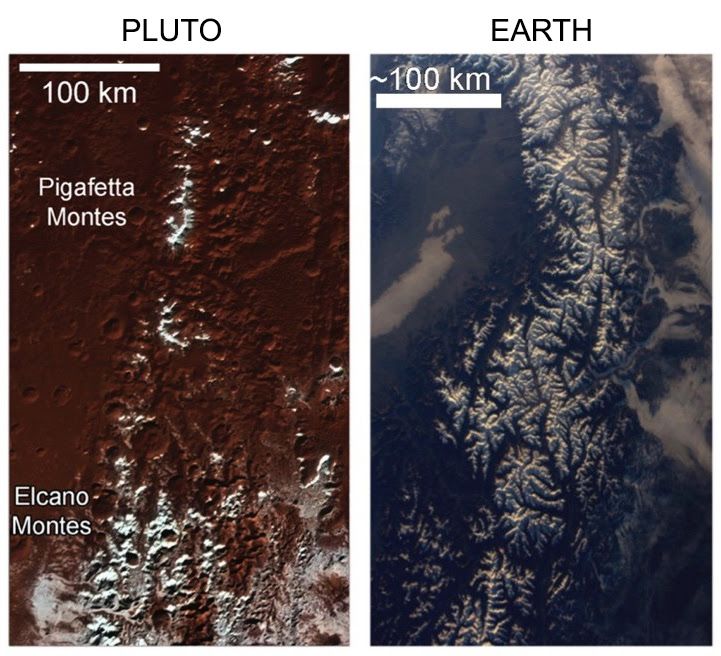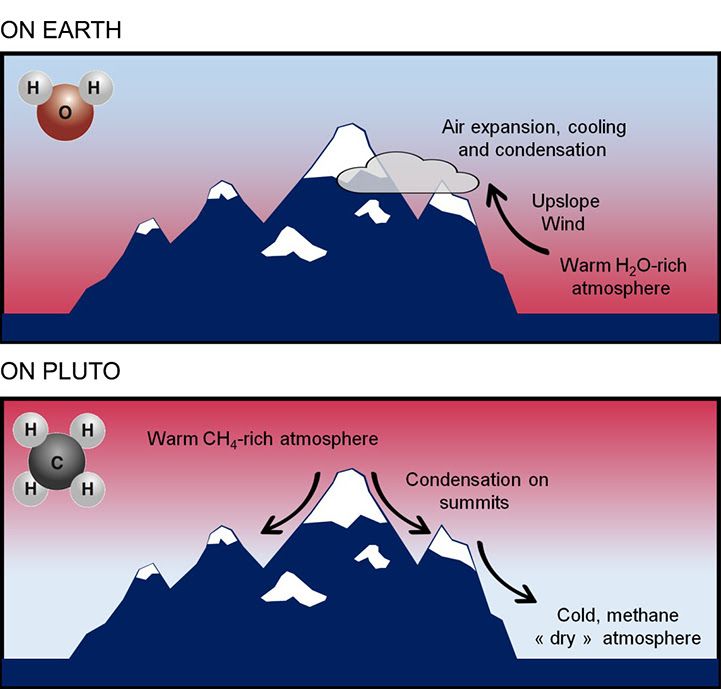Although Pluto has been demoted to a dwarf planet, the distant world close to the rim of the solar system has glaciers, avalanches, a liquid ocean beneath its icy crust, a complex atmosphere, and tall mountains. In fact, flybys of Pluto performed in 2015 by NASA’s New Horizons probe revealed snow-capped chains of mountains that could have very well been mistaken for a landscape on Earth.
While it’s true these mountains are covered in snow, it’s not the kind of snow you’re familiar with. Instead of water ice, these formations are covered in methane frost, according to a new study published in Nature Communications by astronomers at NASA’s Ames Research Center in California.
The weirdest peaks in the solar system

Being more than 3.6 billion miles (5.8 billion kilometers) away from the sun, Pluto is an icy world where temperatures typically dip as low as minus 387 degrees Fahrenheit (-232 degrees Celsius). Bearing these frigid conditions in mind, it’s no wonder that Pluto is mostly covered in ice and snow. But due to the planet’s unique atmospheric composition, which includes nitrogen, methane, and carbon dioxide, the snow appeared red — with one exception: its white mountain peaks.
The peaks examined by the researchers for their new study lie at the edge of the iconic heart-shaped glacier at Pluto’s equator, in a region known as Cthulhu. It’s the only place other than Earth in our solar system that’s known to have white-peaked mountains.
These mountains are about 2.5 miles (4 km) in height, which is really tall for Pluto’s diameter — If Earth was the size of a nickel, Pluto would be about as big as a popcorn. Intriguingly, these are mountains made of water ice which is as hard as rock on Earth due to the extremely cold temperature.
However, the bright-white peaks have a different composition. Based on computer simulations performed by Tanguy Bertrand and colleagues at NASA, the bright frosts are mostly made of methane-rich ice.
White peaks that form backwards

Here on Earth, temperature decreases the higher up in altitude you climb, causing water carried by moist winds to condense and create snow-capped peaks. Not on Pluto, though — the opposite process occurs there.
As you ascend Pluto’s mountain peaks, the temperature increases because its surface is warmed by the sun. So, oddly enough, temperature on Pluto rises with altitude.
Since Pluto has more methane gas at its warmer, higher altitudes, the gas becomes saturated and freezes directly onto the mountain peaks. At Pluto’s surface, at lower altitudes, the methane concentration is too low for it to condense.
NASA scientists believe the same process may be responsible for the formation of other methane-rich deposits across Pluto, as well as on other bodies in the solar system, such as Neptune’s moon Triton.
Was this helpful?



